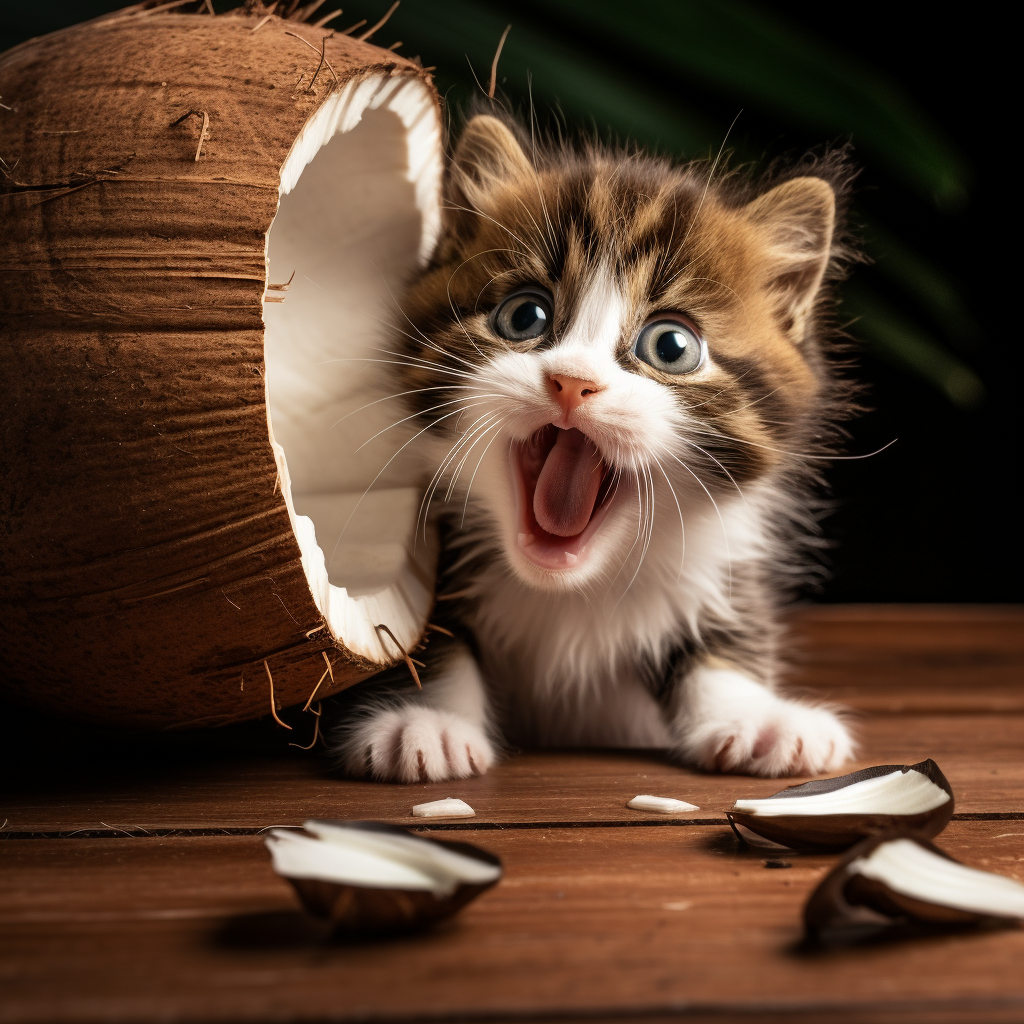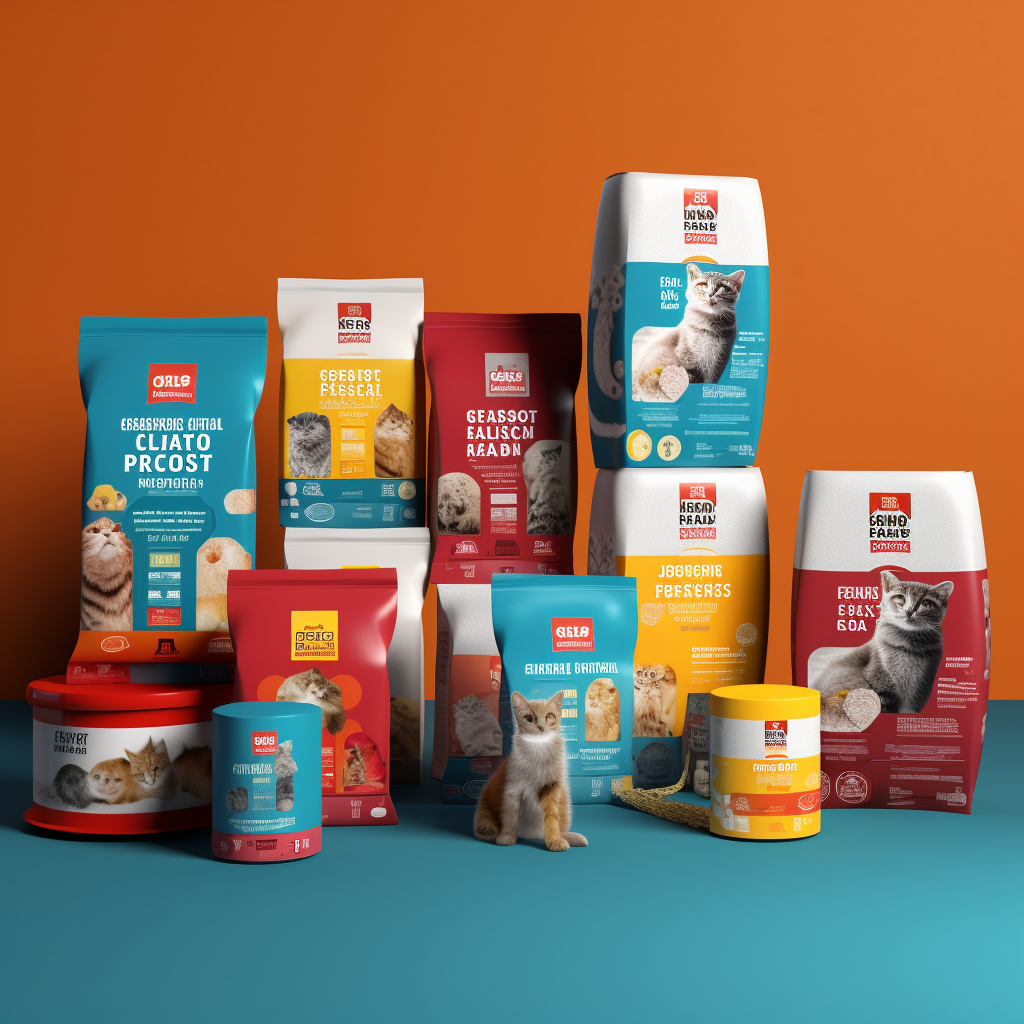
Introduction
Feline lovers often encounter the curious gaze of their furry companions when enjoying a delicious snack. The question arises: Can cats eat coconut? Delving into this topic uncovers a world where the dietary needs of cats intersect with the unique nutritional profile of coconut.
In this comprehensive guide, we embark on a journey to demystify the compatibility of coconut with our beloved feline friends. By understanding the distinct nutritional requirements of cats and the composition of coconut, we aim to answer the burning question while providing insights for responsible pet ownership.
Join us as we unravel the complexities of feline nutrition and the potential impact of coconut consumption on our curious, coconut-curious cats. This engaging and informative exploration will help cat owners navigate the world of pet nutrition with confidence and wisdom.
Understanding Coconut's Nutritional Composition: A Deeper Dive
Coconut, a tropical delight cherished by many, harbors a rich nutritional profile that tantalizes taste buds and offers a plethora of nutrients. Its composition reveals a tapestry of elements, captivating both in taste and health benefits.
Protein Power: With a modest 3% protein content, coconut stands out for its richness in other vital nutrients, offering a robust nutritional foundation.
Fatty Richness: At a striking 33% fat content, coconut boasts an array of healthy fats, distinguishing it from other fruits and making it a nutritional powerhouse.
Carbohydrate Charm: Sporting 15% carbohydrates, coconut brings a balanced blend of nutrients, although not entirely aligned with a feline’s dietary needs.
Beyond its macronutrient composition, coconut flaunts a diverse spectrum of essential elements such as vitamin B complex, manganese, copper, selenium, magnesium, phosphorus, iron, and potassium.
This nutritional mosaic contributes to its appeal in human diets but raises the query of its compatibility with the distinct dietary requirements of our feline friends. Join us as we explore the intersection of coconut’s nutritional allure and the specialized dietary needs of our curious cats in the next section.
Can Cats Eat Coconut? Understanding the Nutritional Disparity

Cats, as enigmatic creatures, possess dietary needs that sharply contrast with those of humans. Their obligate carnivorous nature demands specific nutrients for optimal health, paving the way for a distinct nutritional contrast when it comes to coconut consumption.
The Protein Puzzle
For Cats: Felines thrive on animal-based proteins that provide essential amino acids crucial for muscle strength, skin health, and organ maintenance. Their metabolic framework relies on these proteins, obtained exclusively from meat and fish.
For Coconut: While coconut holds a mere 3% protein content, it lacks the spectrum of amino acids vital for feline health, rendering it unsuitable as a primary protein source for our whiskered companions.
The Fats Factor
For Cats: Essential fatty acids found in animal fat form a cornerstone of feline health, supporting cellular structure and overall well-being. Fat sources are paramount in meeting their energy needs and taste preferences.
For Coconut: With a remarkable 33% fat content, coconut stands out as a source of healthy fats for humans. However, the richness in fat poses a nutritional challenge for cats, as their requirements differ significantly.
The Carb Conundrum
For Cats: Cats struggle with carbohydrate processing, facing challenges in metabolizing and utilizing carbohydrates effectively. A low-carb diet aligns more closely with their evolutionary dietary needs.
For Coconut: Boasting 15% carbohydrates, coconut contradicts the dietary needs of cats, making it a less-than-ideal addition to their nutrition.
The Vitamin and Mineral Mismatch
For Cats: Apart from proteins and fats, cats require a specific balance of vitamins and minerals to maintain optimal health, predominantly sourced from animal-based diets.
For Coconut: While rich in some vitamins and minerals, coconut falls short in providing a comprehensive spectrum of nutrients required by our feline companions.
The disparity between the nutritional needs of cats and the composition of coconut emphasizes the unsuitability of this tropical fruit for fulfilling the dietary requirements of our furry friends. Join us as we further explore the potential repercussions of introducing coconut into a cat’s diet in the subsequent section.
Check out our other articles on what we can and can’t include in our cats diets:
The Impact of Coconut on Cats: Unraveling Potential Repercussions
Introducing coconut into a cat’s diet entails a host of potential effects due to the mismatch between their dietary needs and the fruit’s nutritional composition. Understanding the ramifications becomes essential to safeguard the well-being of our beloved feline companions.
Digestive Disarray
Stomach Sensitivity: Cats possess delicate digestive systems easily disrupted by unfamiliar foods. Coconut consumption may lead to digestive upsets such as nausea, vomiting, diarrhea, and a reluctance to eat.
Potential Long-term Effects: In severe cases, digestive disturbances caused by coconut can trigger chronic digestive ailments like irritable bowel syndrome or constipation, jeopardizing the cat’s overall health.
Potassium Predicament
Imbalance Risks: Coconut’s high potassium content poses risks of inducing muscle weakness, depression, and heart palpitations in cats, potentially leading to urinary tract issues and bladder complications.
Weight Woes
Weight Management: Regular coconut consumption, rich in fat content, can tip the scales unfavorably for cats, leading to unwanted weight gain and potential health consequences, especially for indoor or less active cats.
The potential impact of coconut on cats unveils a realm where the introduction of this tropical delight into their diets might trigger distressing consequences. Exploring further, we unravel the distinctions between coconut flesh and coconut milk and their varied effects on feline health in the following section.
Clarifying Coconut Products: Flesh vs. Milk for Feline Consumption
Understanding the distinctions between coconut flesh and coconut milk is pivotal in comprehending their varied impact on our feline friends. Let’s dissect these coconut derivatives and their potential implications for our curious cats.
Coconut Flesh: A Nutritional Snapshot
Rich Fatty Content: Coconut flesh, known for its high fat content, poses challenges for feline health due to an excessive fat ratio compared to their dietary needs.
Digestive Impact: Introducing coconut flesh to a cat’s diet may result in stomach sensitivities, leading to potential digestive issues and long-term complications.
Coconut Milk: A Different Nutritional Spectrum
Fat-Protein Ratio: With a higher fat-to-protein ratio, coconut milk poses similar risks as coconut flesh but with a different impact due to its composition.
Potential Stomach Upsets: Its fat content coupled with lower protein levels increases the likelihood of digestive disturbances, similar to coconut flesh, leading to potential long-term health implications for cats.
Understanding these nuances between coconut flesh and coconut milk aids in navigating potential risks associated with their introduction into a cat’s diet. Stay tuned as we delve into guidelines for selecting optimal cat food to ensure your feline friend’s well-being and health.
Choosing Ideal Cat Food: Navigating Nutrition for Feline Health

Selecting the right food for your feline companion is crucial in promoting their health and well-being. With a myriad of choices available, understanding the key elements of cat food and making informed decisions becomes a cornerstone of responsible pet ownership.
Product Name Decoded
The name of a cat food product offers insights into its composition:
- Understanding Percentages: Product names indicating “With” may contain 4-14% of the named meat, while designations like “Rich in” may boast 15-26% meat content. Names suggesting over 26% meat indicate a more protein-rich food choice for your cat.
Ingredients Unveiled
- Deciphering Ingredients: Ingredients are listed by volume, with specific types of meat ideally positioned at the top. Beware of ingredient splitting, undefined meat sources, and complex scientific names in the list, which may indicate a lower quality food choice.
Guaranteed Analysis Insights
- Grasping Nutritional Details: The guaranteed analysis section outlines the percentage of major food groups in the product. A high protein percentage, a concise ingredient list, and a name suggesting a significant meat content are positive indicators for a healthy and nutritious choice.
Making an informed decision about your cat’s diet involves understanding these label elements to ensure the best possible nutrition for your feline companion. Join us as we explore additional harmful substances to avoid in your cat’s diet, maintaining a safe environment for your curious and adventurous pets.
Additional Harmful Substances for Cats: Safeguarding Feline Health
Beyond coconut, several substances can pose risks to your feline friend’s well-being. Understanding and avoiding these harmful elements become paramount in providing a safe environment for your curious and adventurous pets.
Forbidden Foods for Cats
- Dairy Dilemma: Dairy products like milk, cheese, and yogurt can lead to digestive issues due to lactose intolerance in many cats.
- Allium Vegetables: Onions, garlic, and chives are notorious for causing damage to a cat’s red blood cells, potentially leading to anemia.
- Chocolate and Cocoa: These contain theobromine, which can be toxic for cats, causing various health issues and, in severe cases, even fatalities.
- Natural Stimulants and Relaxants: Alcohol and coffee pose serious risks, affecting a cat’s nervous system and leading to potential health crises.
- Citrus Fruits: While harmless to humans, the essential oils and psoralens in citrus fruits can cause digestive disturbances in cats.
Maintaining a Safe Environment
- Storage of Hazardous Foods: Keeping potentially harmful food items out of reach and secured in closed containers reduces the risk of accidental ingestion.
- Immediate Clean-Up: Swiftly cleaning up after meals prevents cats from consuming dangerous leftovers or scraps, ensuring their safety.
- Vigilant Monitoring: Keeping an eye out for any signs of illness or behavioral changes in your cat aids in early detection and timely intervention.
Avoiding these harmful substances, in addition to steering clear of coconut and similar problematic foods, is pivotal in preserving your cat’s health and vitality. Stay tuned for a comprehensive guide to what cats can and cannot eat, enriching your knowledge for optimal pet care.
Conclusion: Nurturing Your Cat's Health through Informed Choices
As dedicated cat owners, understanding the intricate balance between a cat’s nutritional needs and the diverse array of foods they encounter remains fundamental in ensuring their health and happiness. Exploring the nuances of what cats can or cannot eat provides a roadmap for responsible pet care and informed decision-making.
By delving into the realm of feline nutrition and examining the impacts of various foods like coconut, we empower ourselves to make conscientious choices. While coconut might seem appealing to our taste buds, its unsuitability for our feline friends becomes apparent due to their distinct dietary requirements.
Armed with the knowledge of harmful substances and nutritional disparities, you’re now equipped to safeguard your cat’s well-being. Opting for high-quality, species-appropriate cat food and steering clear of potential hazards ensures a safer environment for your beloved pet.
Remember, your vigilant care and informed choices pave the way for a healthy and thriving life for your furry companion. Continue to explore our comprehensive guides, enriching your understanding of what’s best for your cat’s health and happiness.
Together, let’s nurture a world of wellness and vitality for our feline friends. Stay informed, stay attentive, and treasure the rewarding bond you share with your cat.

Cat-Friendly Gardening: Creating a Safe Haven for Your Feline Friends
Table of Contents Introduction Hey there, fellow feline enthusiasts! 🐾 Welcome to a space where your garden becomes not just a patch of green but

From Lilies to Sago Palms: Protect Your Cat from These 10 Toxic Plants
Table of Contents Introduction: Keeping Your Furry Friend Safe from Toxic Plants Hey there, fellow cat lovers! We all know our feline companions can be

Cat Nutrition 101: Decoding Labels & Essential Nutrients A-Z!
Table of Contents Introduction As a cat owner, you want nothing but the best for your furry feline friend. And that includes providing them with
